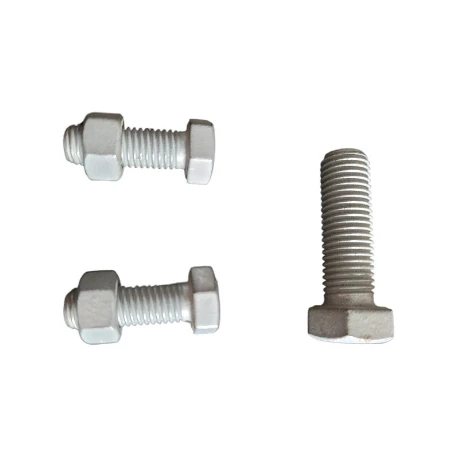

self drilling self tapping screws
नवम्बर . 29, 2024 19:43 Back to list
self drilling self tapping screws
Understanding Self-Drilling and Self-Tapping Screws A Comprehensive Overview
Self-drilling and self-tapping screws are essential fasteners widely used in construction, manufacturing, and various DIY projects. These innovative screws simplify the fastening process, reducing time and labor costs while providing reliable and durable connections. This article will delve into the features, applications, advantages, and differences between self-drilling and self-tapping screws.
What Are Self-Drilling Screws?
Self-drilling screws, often referred to as Tek screws, are uniquely designed with a drill bit-like end that allows them to create their own hole in the material they are being fastened into. This eliminates the need for pre-drilling, saving time and effort. Typically made from high-strength steel, these screws are coated to resist corrosion and improve longevity.
The primary feature of self-drilling screws is their ability to penetrate metal, wood, and some plastics without requiring a pilot hole. This characteristic makes them particularly advantageous in situations where speed and efficiency are crucial. Common applications include metal roofing, siding, and concrete installations.
What Are Self-Tapping Screws?
Self-tapping screws, on the other hand, do not have a drill bit tip but are designed to create their own thread as they are screwed into a material. They can be used on various substrates, including metal, plastic, and wood. The design of the screw enables it to cut its thread into the material without the need for a pre-tapped hole.
Self-tapping screws are particularly useful in situations where the materials being joined are relatively thin, as they can grab onto the material effectively. They are commonly used in applications such as assembling furniture, securing panels, and attaching fixtures.
Key Differences
While self-drilling and self-tapping screws may sound similar, their primary distinction lies in their functionality. Self-drilling screws can perform both drilling and tapping in one motion, making them ideal for thicker materials and situations where speed is essential. In contrast, self-tapping screws require that the hole is either pre-drilled or made to accommodate a previously cut thread.
self drilling self tapping screws

Another key difference is the tip design. Self-drilling screws feature a pointed and sharp tip, while self-tapping screws have a more conventional flat tip. As a result, self-drilling screws are generally preferred for metal applications, where creating a hole in sturdier materials is necessary.
Advantages of Self-Drilling and Self-Tapping Screws
Both types of screws offer numerous advantages that make them indispensable in various applications
1. Time Efficiency By eliminating the need for pre-drilling, both screws save time during installation. This speed factor can be crucial in large projects where labor costs can accumulate.
2. Ease of Use The designs of both screws allow for straightforward installation, making them accessible to both professionals and DIY enthusiasts. They can be driven in with standard power tools, simplifying the process further.
3. Versatility These screws can be used in a range of materials, including metal, wood, and plastic. Their adaptability makes them suitable for various applications across different industries.
4. Secure Fastening The ability to create a tight grip ensures a secure fastening that can withstand substantial loads and various environmental conditions.
5. Cost-Effectiveness By reducing labor costs and installation time, self-drilling and self-tapping screws offer a cost-effective solution for many fastening needs.
Conclusion
In conclusion, both self-drilling and self-tapping screws play pivotal roles in modern construction and manufacturing. Their unique designs cater to specific fastening needs, allowing for efficient, reliable, and cost-effective solutions. Understanding the differences, advantages, and appropriate applications of each type can lead to better decision-making for professionals and DIY enthusiasts alike. Whether tackling a small home improvement project or managing large construction operations, choosing the right screw can significantly impact the success of the endeavor.
Latest news
-
Hot Dip Galvanized Bolts-About LongZe|High Strength, Corrosion Resistance
NewsJul.30,2025
-
High-Strength Hot Dip Galvanized Bolts - Hebei Longze | Corrosion Resistance, Customization
NewsJul.30,2025
-
Hot Dip Galvanized Bolts-Hebei Longze|Corrosion Resistance&High Strength
NewsJul.30,2025
-
High-Strength Hot-Dip Galvanized Bolts-Hebei Longze|Corrosion Resistance&High Strength
NewsJul.30,2025
-
Hot Dip Galvanized Bolts-Hebei Longze|Corrosion Resistance&High Strength
NewsJul.30,2025
-
Hot Dip Galvanized Bolts - Hebei Longze | Corrosion Resistance, High Strength
NewsJul.30,2025

